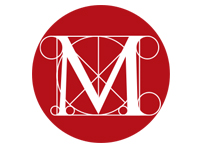
Metropolitan Museum of Art
Reality Check: Truth and Illusion in Contemporary Photography
More than any other type of image, photographs seem to have a direct and natural connection to visible reality. A painting of an angel may be admired for its beauty and masterful technique, but a photograph of an angel is either a miracle or a hoax. In recent years, as the art of photography has grown increasingly sophisticated, artists and viewers alike have become particularly attuned to the medium's potential for distortion, ambiguity, and illusion. This exhibition presents a selection of photographs that tread nimbly on the fault lines between reality and artifice, generating a sense of uncertainty about what is real and what is not.
With the rise of postmodernism in the 1970s, artists began using various strategies to turn the assumed truthfulness of photography against itself. Taking advantage of the camera's capacity to make scale models appear to be lifesize—a perceptual trick used for special effects in countless Hollywood movies—David Levinthal staged convincing war scenes using plastic toy soldiers, while James Casebere created evocative images of tabletop sculptures he built in his studio. The illusions they conjured were deliberately flawed; the point was not to deceive the viewer but to highlight the role perception plays in the construction of photographic truth. Over the past few decades, set-up photography—ranging from pictures of sculptural models by Thomas Demand and Robert Gober to the elaborately choreographed cinematic scenarios of Gregory Crewdson—has evolved into a major current in contemporary art.
While photography can make staged scenarios look convincingly real, it can also make real scenes or landscapes appear strangely artificial. The saturated color and hallucinatory clarity of Julian Faulhaber's pristine gas station and Frank Breuer's sleek corporate façades have the paradoxical effect of making these actual locales look uncannily like scale models. Naoki Honjo uses selective focus to achieve a similar toy-like effect in his aerial views of Tokyo. This play of truth and illusion becomes dazzlingly complex in photographs of places where fantasy meets reality, such as Thomas Struth's view of a pirate-themed hotel in Las Vegas and Shai Kremer's panoramic study of a fake city used for military training. Within the last decade, the thorough integration of photography and digital technology has pushed the medium's trompe l'oeil illusionism to a new level. In the work of younger artists like Craig Kalpakjian, whose computer-generated images of corporate corridors have no real-world counterparts, the idea of photography as a true mirror of reality seems more illusory than ever.